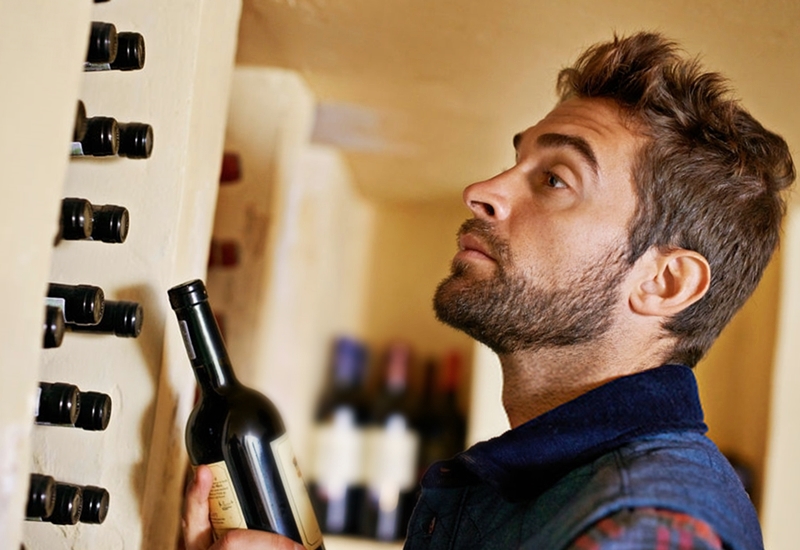How to store wine the right way
Proper wine storage: ensuring quality and preserving flavors

When we think of wine, images of celebrations, cozy dinners, and cherished moments come to mind. However, many fail to recognize that proper wine storage plays an essential role in preserving the quality and enhancing the enjoyment of every sip. Without the right storage conditions, even the finest of wines can deteriorate, turning those anticipated moments into disappointment.
For those who don't intend to consume their wine collection immediately after purchase, understanding the intricacies of wine storage becomes paramount. From restaurants to home cellars, here's everything you need to know about maintaining the perfect bottle of wine.
Why Proper Wine Storage Matters
The delightful experience of drinking wine doesn't start when you pop the cork, but much earlier—when you store it. Proper storage conditions ensure that the wine matures perfectly until the moment you're ready to enjoy it. Moreover, proper storage can save you from the heartbreak and financial loss of disposing of wine spoiled due to poor storage conditions.
Many reputable restaurants and wine merchants invest heavily in specially designed storage areas for their wine collections. Whenever you're planning to purchase or consume wine, opting for such establishments can guarantee you a bottle in its prime.
Tips for Storing Wine at Home
Wine connoisseurs and occasional drinkers alike can store wine at home for extended periods, provided they follow some essential guidelines. Let's dive into the best practices for wine storage:
- Humidity: A relative humidity of 60% to 70% is ideal for wine storage. It helps in maintaining the cork's integrity.
- Position: Store wine bottles horizontally, ensuring that the wine remains in contact with the cork. This prevents the cork from drying out. A dried cork can compromise the bottle's seal, leading to premature oxidation.
- Lighting: A dim or dark environment is best. Direct and intense light can harm the wine, especially white variants.
- Ventilation: While maintaining humidity and horizontal positioning supports cork preservation, it's crucial to ensure proper ventilation to prevent mold or rot.
- Temperature: Aim for a steady 12°C. If the temperature falls below this, it won't ruin the wine but might slow its aging. Temperature fluctuations can either cause wine to seep through the cork or result in the cork drying out.
- Temperature Stability: A constant temperature is pivotal. Daily fluctuations should not exceed 1.5°C and yearly changes, especially for red wines, should stay within 2.5°C.
- Location: Before establishing a home wine cellar or storage, select a place where the wine remains undisturbed for years. Ensure the area is clean and well-ventilated.
- Racking Systems: Your wine racks or shelves should be sturdy, stable, and easily accessible. The material should withstand moisture without warping or corroding.
- Accessibility: Ensure both racks and shelves are easily accessible for safe bottle storage and retrieval.
Common Mistakes in Wine Storage
Even with the best intentions, it's easy to make errors when storing wine. Here are the top pitfalls to avoid:
- Frequent Movement: Wine bottles, especially aged ones, should be disturbed as little as possible.
- Strong Odors: Steer clear of storing wine near items with strong scents, as it can affect the wine's flavor.
- Improper Locations: Kitchens, due to their temperature fluctuations and odors, are unsuitable. Similarly, outdoor storage exposes wine to harmful extremes.
- Mishandling Bottles: Handle bottles gently to prevent unnecessary agitation.
- Stacking Bottles: Avoid stacking bottles on top of each other, which requires moving multiple bottles to access one.
- Neglecting Cleanliness: Regularly clean your wine storage area without using strong-smelling cleaning agents.
- Forgetting Consumption Windows: Different wines have varying optimal consumption periods. Monitor these to enjoy each bottle at its peak.
- Refrigeration: While refrigeration might seem like a quick storage solution, the intense cold can degrade the wine's quality.
- Retaining Original Packaging: Storing wine in its original cardboard box can subject it to temperatures above 18°C, accelerating the wine's deterioration.
In conclusion, the proper storage of wine is both an art and a science. By paying attention to these guidelines and avoiding common pitfalls, you can ensure that your wine remains delightful and captivating until the very last drop.
Founded in 2007, Vinetur® is a registered trademark of VGSC S.L. with a long history in the wine industry.
VGSC, S.L. with VAT number B70255591 is a spanish company legally registered in the Commercial Register of the city of Santiago de Compostela, with registration number: Bulletin 181, Reference 356049 in Volume 13, Page 107, Section 6, Sheet 45028, Entry 2.
Email: [email protected]
Headquarters and offices located in Vilagarcia de Arousa, Spain.